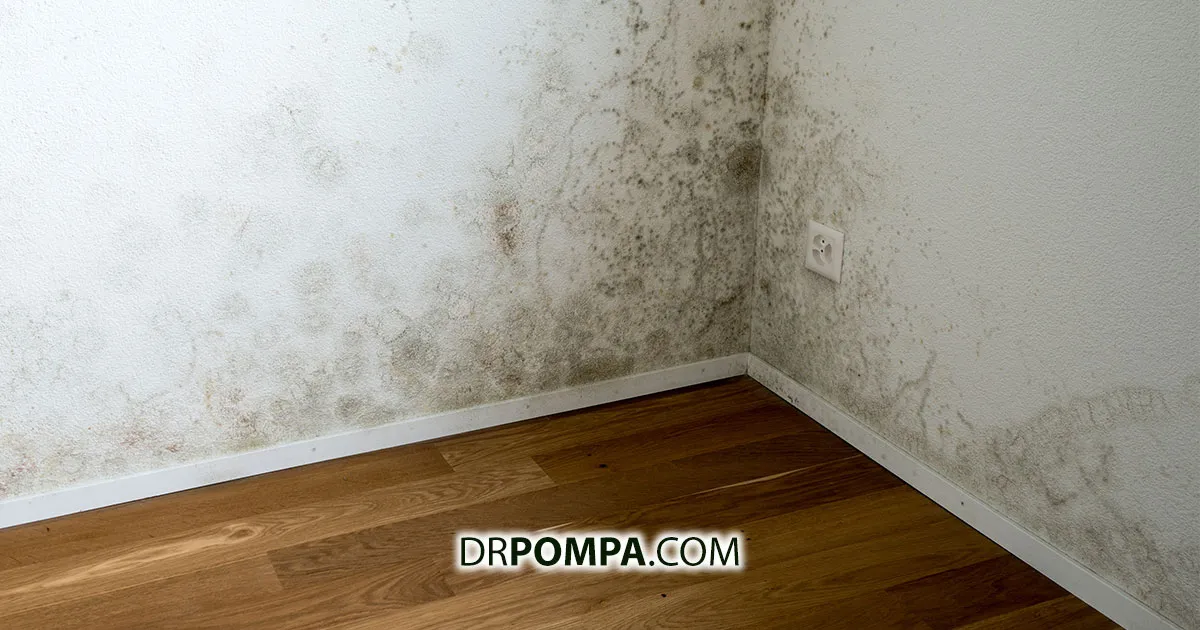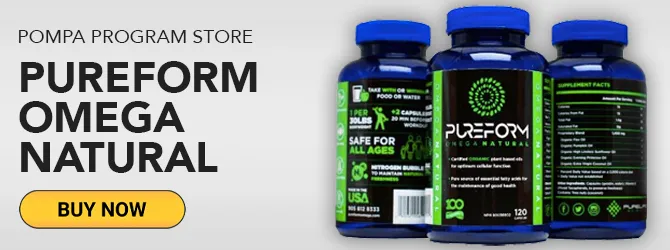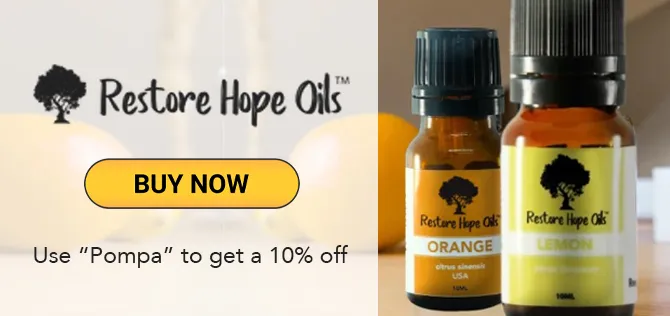The Hidden Dangers of Mold Toxicity: A Silent Killer This subject is an incredibly important topic because it is an ever-growing “missing piece” in the very complicated matrix of modern-day illness. Today we are going to talk about mold. Not the kind of mold that grows on food, but rather black mold: a biotoxic predator that is sweeping the nation and hiding behind our walls and floorboards.
The Hidden Dangers of Mold Toxicity: A Silent Killer
Mold is an ever-increasing problem because modern ways of constructing buildings use drywall and wallpaper, which (as we will explore a little bit later) is the perfect storm to create a black mold infestation. Let’s dive in and explore the symptoms of mold toxicity, what to look for to properly diagnose mold infestation, and how to safely get rid of it in your home.
As we’ve touched on, the dangerous mold that we are discussing today is not the kind that grows on food left in the fridge too long. These biotoxic molds that take hold of our homes, hotels, or workspaces release a particular type of toxin called mycotoxin, which is a biotoxin that interferes with the body’s hormones and eventually takes a severe toll on whole-body health.
It can have a musky smell that you can recognize, but frequently it goes completely unnoticed. It is common in old hotels as well as newer office spaces, especially in damp locations. All it takes is some water (which could be dampness in the air or a leak in the pipes), and all of a sudden, the mold starts to grow indoors. There’s not necessarily visible mold; oftentimes, it’s behind the walls or the floorboards — a silent killer.
Some people are susceptible to mold.
Some people enter a space and immediately start feeling the symptoms: headaches, body aches, allergies, poor sleep. It’s estimated 1 in 4 people are hypersensitive to mold exposure. Whether or not you are one of those hypersensitive people, you do not want to be exposed to this stuff, because mold exposure is causing low levels of chronic stress that can build up over time and cause severe damage in the body.
The Symptoms
Mold toxicity is one of the most common things I see in my patients. They will begin to describe their symptoms, and within minutes, I can already tell: it’s mold. Mold toxicity is very hard to diagnose because the list of symptoms is so broad and complex. Many people get turned away from their GP’s because there are no specific tests available to diagnose it accurately. But as someone who has experienced it myself and seen so many patients recover from mold toxicity, I know it’s real.
The Symptoms of Mold Toxicity Include:
- Anxiety
- Insomnia
- Depression
- Panic attacks
- Joint pain
- Skin irritation (burning, itching, pain, ants crawling sensation)
- Blurred vision
- Chemical sensitivity
- Allergies
- Sneezing
- Cough
- Postnasal drip
- Water eyes
- Food allergies
- Asthma
- Weight gain
- Body odor
- Light sensitivity
- Noise sensitivity
Autoimmune Reactions
The low level underlying chronic stressor of mold toxicity can be that source of stress that’s slowly filling up your cup until some specific event triggers a full-blown autoimmune reaction. A common occurrence is during pregnancy. If a woman has been filling her cup up with these low levels of mycotoxin stress for years, and then falls pregnant, the led released from her bones (since bone density naturally reduces during pregnancy) can trigger a severe autoimmune reaction.
Another example of this low level of underlying stress is a subject we touched on recently at Health Hunters, and that is mercury (amalgam) fillings. We think these poisons don’t impact us because they are not hurting us straight away, but they are there slowly and silently stressing the body— until it breaks.
Mold Toxicity: My Experience
This subject is something I have experience with not only through my clients but in my personal (and recent) life. I had a blower go in my heating, ventilation, and air conditioning (HVAC) system that resulted in a condensation build-up, which filled up the pan, which eventually overflowed and started leaking. It took us about two days to notice because the HVAC was running non-stop, so when I went downstairs to check on the system, I saw a wet carpet.
I put fans on it immediately, and when I went back the next day to check on it, the wood was covered in fuzzy mold. When I got back from a trip, my daughter was complaining of knee pain (which she hadn’t had in a long time). My wife started to have pain in her hips, and I had fatigue and just felt “off.” We cut into the drywall to reveal about a quarter-inch thick of mold growing all over the place. We were by mold exposure.
It can go undetected.
It’s important to note that many people would never suspect that mold is at the root cause of their ailments. On the surface, we did everything right, pulled up the carpet, and let everything dry. But the mold was behind the boards, and although it was invisible, it was infesting the air and poisoning our bodies with biotoxic materials.
Drywall and paper are the perfect storms for mold because cellulose (found between the two) is food for the bacteria. All you need is a little moisture (or a leak), and you have yourself a mold infestation. This problem amplifies with how most modern buildings are sealed because of the lack of airflow traps in moisture (combined that with the drywall problem): biotoxic warzone.
What To Look For:
- Before buying a house: ask about any past leaks and consider getting the house tested for mold. Homeowners do not have to disclose previous leaks, and so your new home may be infested with it before you ever move in.
- Above 50% humidity: you’ve got mold. If you live in a humid area, it is imperative to have dehumidifiers. Also, keep the inside of the house below 50% humidity.
- Paper on drywall (cellulose) is food for mold, all you need is the tiniest amount of water exposure, so being mindful of any “newer” types of buildings using drywall, which traps in humidity. Plus, the drywall paper, and you’ve got a perfect storm of mold.
- Pay attention to how you feel in a new environment.
- Whether it’s a hotel, a new office space: if you’re feeling symptoms all of a sudden, it might be mold lurking behind the walls or floors.
You may have to “fog” your space:
If there’s any leak, this is a surefire sign that mold is on the way. Make sure you properly dry all the affected areas within 24-28 hours, including under the floorboards and behind the walls. Preventatively I would also suggest using a natural chemical and fog space (see below for more on how to do that).
How To Properly Test
Test Yourself
- VCS Test: vcstest.com is a visual contrast test that identifies possible mold exposure because one of the first nerves to get affected by mold is the optic nerve.
- C4a: is a very accurate test you can get at the National Jewish Laboratories lab. They do multiple tests, including blood work, the VCS.
Test Your Home for mold toxicity
Your average mold testing or insurance company will not accurately diagnose mold infestation. Many companies only test for spores in the air. Since mold lurks behind walls and floors, their spores are hidden there as well. What is emitted into the atmosphere are mycotoxins, which do not register on a spore test.
A better option to test for mold toxicity is the ERMI Test. The ERMI tests bits of dust that have been vacuumed out of critical places (like behind the walls, the HVAC systems, and corners in the basement). This test is much more accurate in locating the spores. You can order one at survivingmold.com.
Another, even perhaps better tool, is mold dogs. Yes, dogs have been trained to sniff out the mold. They are an incredible tool to locate mold in your home or space. Hop on Google and find a business in your area.
I Found Mold, What To Do?
- Control the Humidity: Controlling humidity is the number one because humidity feeds the biotoxins. It’s what sends the toxic stuff out into the air; it’s what’s making you sick. If you don’t control the humidity, there will be no fixing the problem. The key number here is less than 50% humidity. Ideally, significantly lower than that. To get humidity levels low, you may require an industrial dehumidifier, or two, depending on the size of your space.
Low-Humidity is imperative before moving forward because a humid space is a moldy space.
- Inline Air Filtration Filters: If you don’t already have them, try installing inline air filtration filters. MERV 7 to MERV 11 would be my suggestion. If you go too high of a MERV rating, it can cut down on the flow for your HVAC. A high MERV rating affects your air conditioning and heating within the home. You can install larger units (which are a little more expensive). However, the bigger size means you can get a higher MERV rating and still move quite a bit of air through your HVAC. We like Enviroklenz mobile air system.
- Mold toxicity: Detox the Home: once you’ve dehumidified, you want to clean the space (including the entire HVAC). Then you want to “fog” the space with a natural chemical to knock out the biotoxins and mold count. There are a few options. One effective spray is “Concrobium.” Concrobium is an over-the-counter natural chemical you can find at places like Home Depot. To do this properly, you need to seal up the house. Sealing the house creates negative air pressure. Next, spray the entire home as well as the whole HVAC system. Your best bet is to hire someone competent to do this properly. You don’t want to risk improperly detoxing your home and risking future problems.
- Re-test, and possibly evacuate. Unfortunately, getting rid of mold toxicity is not always possible. Even the most qualified company might not be able to fix a nasty mold problem. When building materials are very porous (like wood), the infestation can be profound. No amount of excavation, cleaning, and fogging will do. You have to understand that these toxins mostly make their way into everything. It can go from books to bedding, clothes, and furniture. If your mold problem is bad, you might have to genuinely get rid of everything, move, and start fresh. Taking beds, furniture, and other objects from a mold-infested home into a new home might bring those biotoxic spores with you. It might seem extreme, but having worked with so many clients whose health has been devastated by mold toxicity: it’s worth it.
Here’s one way to address mold before you take deeper or more drastic measures…
Because millions of people suffer from mold, but also allergies and sensitivities. They feel like their lives are a constant battle between their bodies and substances in the environment that trigger their symptoms. That’s why I’m so big on something called the EnviroKlenz®, which is an indoor air solution that kills bad bacteria (including mold) and also removes impurities from the air. EnviroKlenz® is committed to air purification on TWO fronts – odors and toxins AND particulate matter – WITHOUT allowing harmful compounds or particulate matter to linger in the air. And there are no fragrances, no toxic chemicals, and no additional compounds, ever.
EnviroKlenz® is relentless at removing particulate matter in the air like smoke, soot, and pollen too! With its hospital-grade HEPA filter, it can remove at least 99.97% of fine particulate matter from the air in your home or business quickly and efficiently.
For more on how to make your home safe, check out Cellular Healing TV, and for more on how to safely and efficiently detox from toxin exposure (including mold), check out Drpompa.com. You can also learn more here: Health Hunters Radio, Episode 14: Dangers of Mold.












